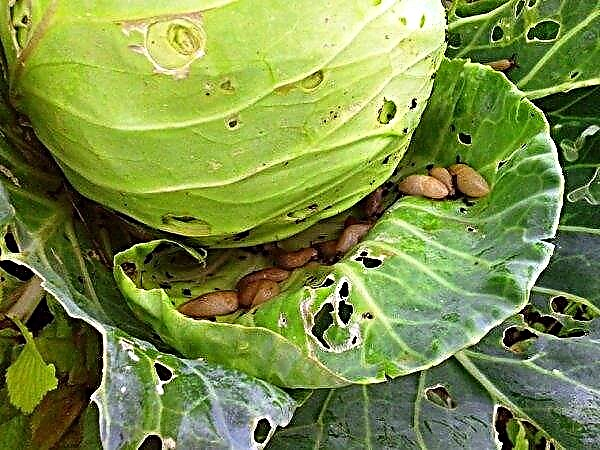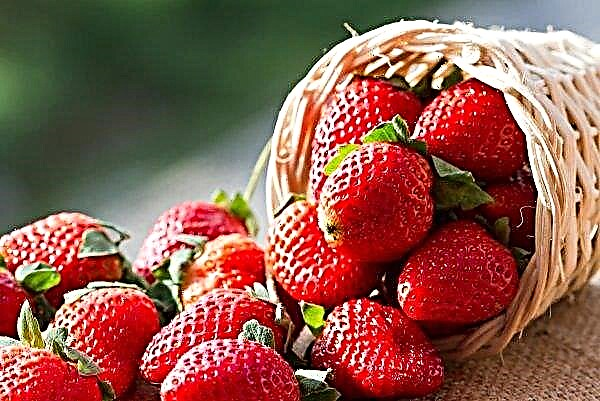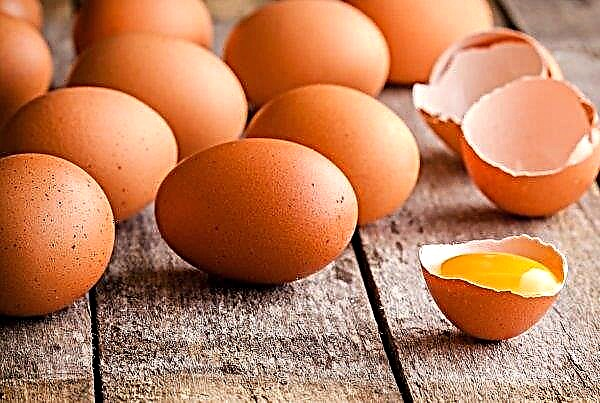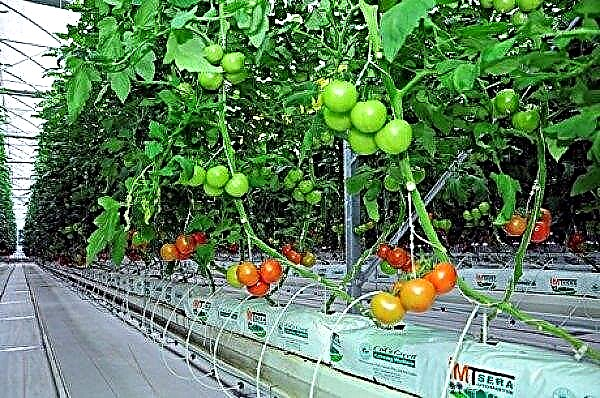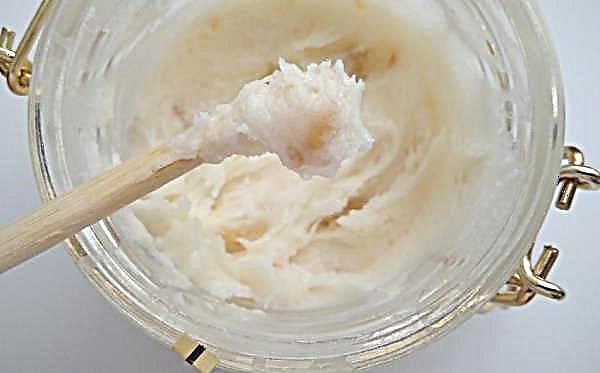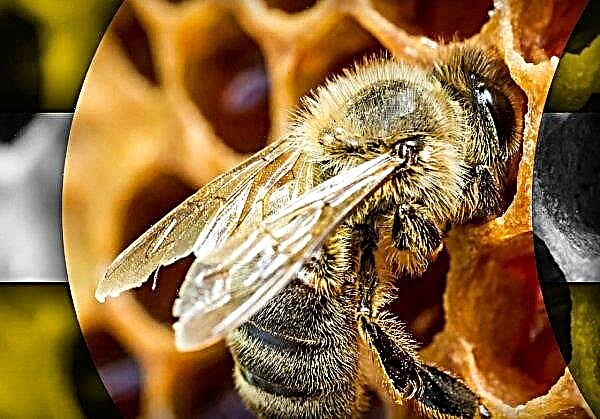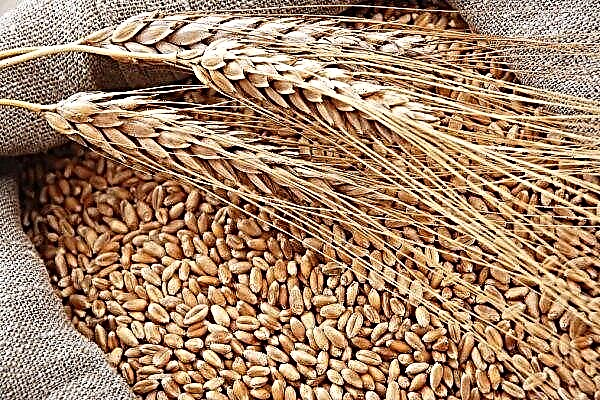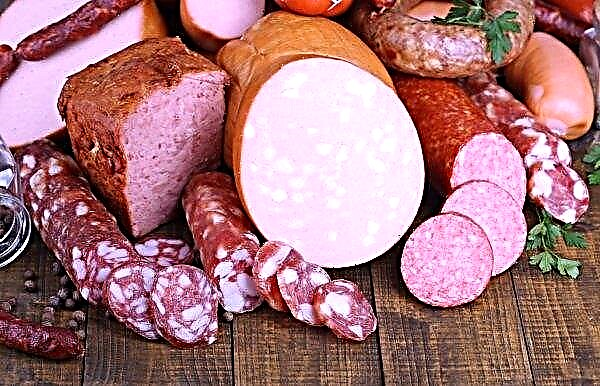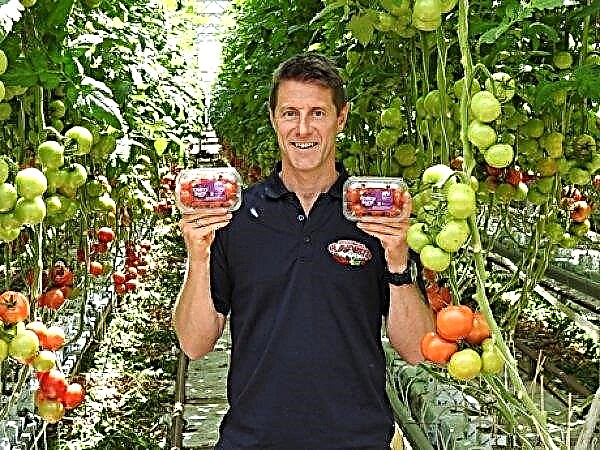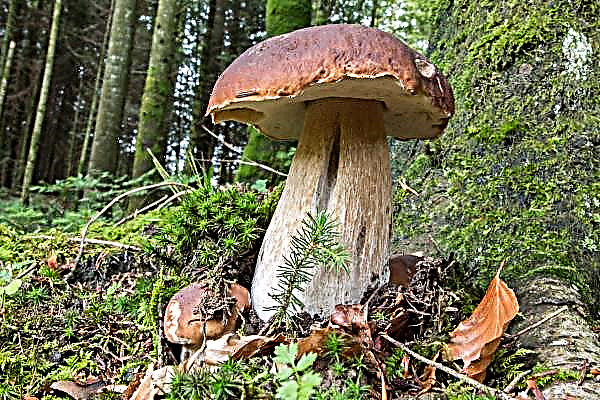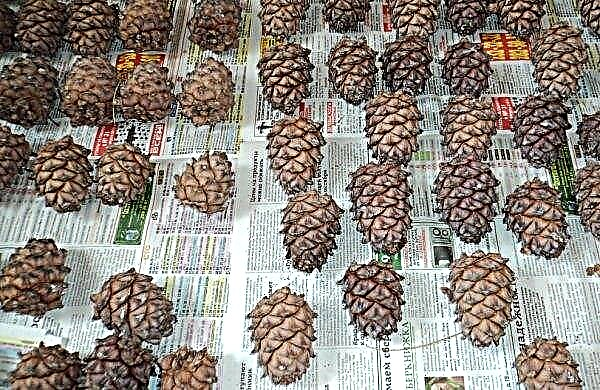It’s difficult to call nutria ordinary pets, but many farmers get a good profit when breeding these animals. What exactly is worth knowing about the characteristics of animals and how to properly organize care for them at home - this will be discussed later.
Description and appearance
The appearance of nutria can be called repulsive, since in their structure they resemble large and shaggy rats, the sizes of which sometimes exceed the parameters of the average indoor dogs. The body length of individual adults is often 50-60 cm, and this is not taking into account the flexible tail. The average weight of animals is 5–12 kg, and males are always larger than females.
The physique of the animal is massive and heavy, but its paws, ears and eyes against the background of the trunk seem too small. Between the toes, you can see well-developed membranes, which is explained by the semi-aquatic life of “rats”. The body of the nutria is covered with a dense waterproof fur, which contains a dense undercoat and coarse awn. Change of coat occurs gradually and lasts throughout the year; however, the best characteristics of fur can boast in winter. The front teeth are the most noticeable sign of nutria - incisors painted in bright orange.
Did you know? The species name of the nutria family, Myocastoridae, translates as “beaver”. However, these animals are not related to either mouse or beavers.
Productivity
Nutria is appreciated not only for the high characteristics of its fur, but also for the quality of meat, which is often used as a good dietary product. It is characterized by a delicate aroma and high taste properties, which is largely due to the presence of nitrogenous substances in its composition.
The yield of meat of animals directly depends on their breed, but on average, males grown weigh 7-8 kg, and females reach a weight of 5-6.6 kg. With such indicators, we can safely hope for 3-4 kg of pure product.
As for the productivity of nutria in terms of reproducing offspring, one adult female can lead to 18 puppies, although the average fecundity remains at the level of 4-6 individuals. As in the case of meat characteristics, a significant role is played by the breed of animals: standard nutria give birth to a maximum of 9 babies, white Italian - 12, pearly - 10, golden - 8.
Breed selection for home breeding
You can determine the breed of a particular nutria by the color of its fur, based on which they distinguish:
- standard animals with brown color of wool (these nutria are most similar to their wild relatives and may have different ebbs on the fur coat);
- white Italian nutria;
- pearlescent;
- silvery;
- pearl;
- pure black;
- lemon.

The main pigment extends to the root of the hairs, but their ends are much lighter. Despite the fact that "colored" nutria are much more valuable, most Russian livestock breeders are engaged in breeding just standard brown animals, raising them in order to obtain meat.
Breeding methods
Without properly organized breeding work, it is impossible to get more and more new generations of nutria, the main characteristics of which will fully correspond to the most preferred parental ones. For this reason, each owner should be able not only to timely discard unsuitable offspring, but also to correctly select parental couples for future young animals.
Important! If you breed nutria in a heterogeneous manner, desired result it does not always come out the first time, therefore it is often necessary to repeat culling up to several litters, only for the third time receiving individuals with the most suitable set of pedigree characteristics.
There are two main methods of breeding nutria breeding at home:
- Homogeneous involves breeding animals in a homogeneous type and is considered the best solution for obtaining the most productive offspring. Its essence lies in the selection of a pair of animals with similar characteristics: body type, weight gain rate, bone structure and fur color. The qualities desired for young animals should be well manifested in both parents, because only in this way the chances of their further manifestation in the offspring will be maximized. With further cultivation of small nutria, all actions are repeated, and animals with the maximum manifestation of breed characteristics of interest are selected from the entire livestock.
- Heterogeneous (heterogeneous) - a less popular method, but it is also often used by large farms and in personal plots. In this case, livestock breeders choose the parent pair not by similar characteristics, but rather try to get offspring with the most complete list of positive qualities from both parents. For example, a female may have an interesting coat color, but the texture of the coat leaves much to be desired, so she needs a male with a good fur coat, but not necessarily with a colored coat. Individuals that inherit the best pedigree qualities from their parents are used for further breeding.

Content
The content of nutria at home implies the satisfaction of all the needs of the animals in nutrition, home improvement and further care, so each breeder should carefully study all aspects of this process.
Terms & Conditions
Like rabbits, nutria love warm rooms, always with no drafts. For this reason, even a spacious cage in the cold season is by no means the best option for keeping animals. The temperature in the place of their residence in any season should not fall below + 15 ° C, otherwise mass death of animals is possible. In addition, a sufficient amount of sunlight is also a prerequisite, which is why one cell wall is always made mesh.
The walking of the animals should be daily, because the lack of fresh air negatively affects not only their health, but also the appearance of the fur coat. Do not forget about the demanding of the animals to water. Nutrias love to swim, so in their natural habitat they always organize their burrows near water bodies. Sometimes they even dive, being under water for up to 10 minutes.
If we reduce the content of animals only to the cellular method, it will save money, but will entail excessive accumulation of fat in animals, which always negatively affects the quality of the fur. It is advisable to bathe rodents daily, or you just need to move them into a spacious enclosure with a small pond (you can pour a full bath of cold water).
Equipment
The best option for a nutria house is a warm room, divided into several parts. One zone can be intended for feeding, and the second for nesting. In addition, do not forget to organize a walking area, and then place a spacious water tank in it, or organize a small lake where animals can swim in plenty.
Of course, each animal housing should provide a place for installing feeders and drinking bowls, and to prevent splashing of the liquid, it is worth paying attention to vacuum or nipple versions of such structures, tightly fixed to the wall of the cage. Of the feeders, bunker, standard or nursery varieties with high sides will be equally relevant.
Selection and arrangement of housing
Based on the climatic conditions of a particular nutria breeding region, you can choose several options for building a house for animals. The most typical varieties are cages, aviaries and pits, although wooden houses should not be ignored.
House
Wooden structures of the type of house usually consist of two separate compartments: the first is used to feed animals, and the second serves as a nest. So that rodents could not gnaw through the walls or floor, from the inside of the structure, the surface is covered with a fine-mesh metal mesh. Next to such a room is to organize a walking area, also fencing it with a net. If the paddock is located directly on the ground, it is advisable to bury the fence 30 cm deep into the ground so that the animals do not undermine.
On warm summer days, it is useful for nutria to spend more time in the fresh air, so try to choose only areas on the south side of the territory that are closed from cold winds to place the walking area. The height of the closed walks should not exceed half a meter, and in the upper part they are covered with a net with a door, allowing a person to get inside when necessary. An open range can have a variety of sizes, but always with a slight slope towards the pool (its depth can reach 40 cm).
In addition to the wooden variety of houses, there are also stone versions of such structures; True, they are only relevant for breeding animals in regions with a warm climate. In this case, the nutria dwelling is built of brick or stones and set it directly on the ground. In some cases, a metal mesh is embedded in the walls of the house, and so that the animals do not run away from it, the same canopy (from the mesh) can be arranged over the walls. If there is a full roof, then it is usually made folding, which greatly facilitates the livestock breeder care for the livestock.Did you know? In 2006, in the US state of Louisiana, several nutria escaped from the farm to freedom. Now their population totals about two million individuals.
 Stone or wooden houses are an excellent option for placing one male and several females with offspring (up to eight young individuals). However, the temperature inside the stone structures will always be lower than in wooden ones, and this fact must be taken into account when receiving offspring.
Stone or wooden houses are an excellent option for placing one male and several females with offspring (up to eight young individuals). However, the temperature inside the stone structures will always be lower than in wooden ones, and this fact must be taken into account when receiving offspring.Cell
A cage is a common place for nutrias that are grown to produce large quantities of meat. Usually, males live in such conditions, which approximately 8 months after birth, grow to the desired size and prepare for slaughter. The weight of one individual at this age is approximately 2.5–3 kg and it already boasts a high-quality skin. If you wait another six months, then the weight of the animal will increase to 6-7 or even 8-9 kilograms, but its fur may not be as good as you would like. If possible, the constant content of animals only in cages should be avoided, because in a limited space animals will not be able to fully develop.
If possible, the constant content of animals only in cages should be avoided, because in a limited space animals will not be able to fully develop.
The size of the cell itself and the density of the nutrients inside it are calculated on the basis of the norm of 0.5 m per adult animal.
Aviary
Aviaries are an ideal home for nutria families, which can consist of 3-4 females and one male. About once a year, each female gives birth to at least 5 cubs, who for the first time remain with their mother in the same enclosure. This option of keeping is often considered one of the most convenient: firstly, animals always have the ability to move freely, and secondly, the breeder does not have to spend a lot of time caring for their pets.
To breed more families, more enclosures will be needed, so that one is used to support the male and several females, the second housed pregnant nutria, and the third remained for the young growth. The optimal size of enclosures for males and females is 2.5 × 5 meters, but constructions for pregnant individuals can be organized smaller.
The design of the aviary has several main features. For example, the floor in such pens must be concrete, possibly with a bed of dry hay. The walls of the structure are better covered with a metal mesh, which is also often used to create partitions inside aviaries (an alternative for their organization will be slate or metal sheets). The roof of the enclosure can both be placed over its entire space, and cover only part of it, which will provide nutrients with rain protection. The optimum temperature throughout the aviary is + 15 ... + 20 ° C.
The roof of the enclosure can both be placed over its entire space, and cover only part of it, which will provide nutrients with rain protection. The optimum temperature throughout the aviary is + 15 ... + 20 ° C.The aviary content of nutria also provides for the placement of cells inside the aviary, with litter of hay. Such places are intended for resting animals during the cleaning of the enclosure, and so that they do not interfere, they can be closed inside for this time.
Pit
The arrangement of the nutria pit is carried out by analogy with the rabbit shelter, with the only difference being that “rats” need constant access to water.
The preparation of the site for the arrangement of the pits implies the observance of several simple rules:
- the depth of the pit should not exceed two meters;
- inside the recess, it is necessary to establish a water tank, the role of which is well suited to the old trough or bathtub;
- it is desirable to overlay the walls of the pit with brick or slate sheets, thereby limiting further bursting of holes by rodents.
- it is better to cover the pit with a removable roof so that it is convenient to give the animals food, drinking water and clean the room when cleaning.
 Such a variant of keeping in the warm season is perfect for any climatic zone, but with the advent of winter colds you will have to transplant rodents into cages and transfer them to a warm room.
Such a variant of keeping in the warm season is perfect for any climatic zone, but with the advent of winter colds you will have to transplant rodents into cages and transfer them to a warm room.Feeding
Nutria perfectly feed on readily available plant foods, among which reeds and cattails predominate in their natural habitat. At home cultivation, they can be replaced by vegetables and fruits, as well as plants collected on the site.
However, in order to make food as attractive as possible for nutria, it is worth adhering to the following rules for the selection of feed:
- the grass must be young, because the animals will not eat old and rough grass blades;
- the best option for a suitable herb collection is a mixture of clover, lupine, field sow thistle, corn, sunflower;
- caustic buttercup, celandine and sleep-grass are considered dangerous to the health of rodents, which must be completely excluded from their diet;
- from root crops apples, potatoes, cabbage and beets will be especially useful for nutria;
- cereals can be given to rodents only steamed or ground;
- the use of leftover food from the human table is acceptable, but it is important to monitor the freshness of the products.
 The main task of the breeder is to organize a competent and balanced diet of nutria, possibly taking into account the fattening of individual individuals for meat. It is also worth considering the specific time of the year, because different feeds are available in summer and winter.
The main task of the breeder is to organize a competent and balanced diet of nutria, possibly taking into account the fattening of individual individuals for meat. It is also worth considering the specific time of the year, because different feeds are available in summer and winter.Summer diet
In the warmer months, the daily diet of one adult nutria may include:
- 1 kg of grass, for the most part quinoa, coltsfoot, dandelions, alfalfa and clover, although if possible it is worth giving the animals and reeds or green legumes (corn, peas, rye);
- 100-150 g of feed mixtures or food concentrates based on grain crops;
- a little salt (0.4-0.5 g is added per 100 g of dry feed);
- chalk (1 g);
- fish meal (2 g).
Important! So that the nutria wouldn’t be capricious and trample the grass into the ground, choosing only the most delicious food in their opinion, it would be better to mix the entire daily feed rate together, dosing out the animals with a uniform nutrient mass.
Sometimes the green part of the feed can be replaced with fresh vegetables and fruits, but always without the slightest sign of rot. The same applies to algae, which sometimes replace 10-20% of the daily portion of greens. It is useful to lay out the young branches of trees in the corners of the enclosure (cages), because home nutrias gnaw them as willingly as their wild relatives.
Regular feeding of animals - 2 times a day, and preferably at the same time. Moreover, in the morning it is better to give out 40% of the total batch, and in the evening leave 60% of the daily food intake.This is due to the nocturnal lifestyle of nutria and the corresponding biorhythms of their body, even despite growing in cells on a farm.
An approximate diet of animals at this time may look like this (daily rate for one individual):
| Females | Males | Young 1-6 months |
| 600 g of grass | 600 g of grass | 100-500 g of grass |
| 150 g of concentrates | 100 g of concentrates | 50-100 g of concentrates |
| 0.5 g salt | 0.5 g salt | 0.2-0.5 g of salt |
| 50-200 g root vegetables |

Winter diet
Calculation of the winter diet of nutria is complicated by the lack of fresh green food in the cold season. The basis of the menu in this case is the combination of dry and juicy products: straw, wreaths of twigs, hay, carrots, fodder beets. Dry food can be given to animals once every 2-3 days, and in severe cold more often, since hay is also used as bedding. Despite the low content of nutrients in the composition of tree branches, dry food improves the digestive tract of animals, so be sure to become part of the daily diet.
Carrots, potatoes, zucchini and beets are usually used as succulent feeds, and about 400 g root crops are consumed daily per individual. Nutria can eat even more, but you should not overload the stomach with such food.Did you know? In Spanish, nutria means otter.

A useful and balanced version of dishes for the winter is considered to be wet mixers for animals. Thick cereals based on crushed grain or a feed mixture with potatoes or peeling and flour can also include food waste from the human table, and in order to make the mixture optimal density and better consumed by animals, small balls are rolled from it, which can be conveniently kept by nutria in legs when eating.
The winter diet, taking into account the sex of animals, looks like this:
| Females | Males |
| 200 g of hay | 175 g hay |
| 200 g root vegetables | 200 g root vegetables |
| 175 g of concentrates | 120 g of concentrates |
| 0.5 g salt | 0.5 g salt |
During mating, the nutrient appetite may decrease, but pregnant females should be fed better, increasing the daily intake of each type of feed by an average of 100-200 g.
Vitamins and Minerals
Mandatory vitamin and mineral supplementation of the diet of rodents will be meat and bone meal, chalk and saltcontaining all the necessary supply of nutrients.
The most important vitamins and minerals in this case include the following:
- retinol (vitamin A);
- calciferol (vitamin D);
- Vitamin E
- B vitamins (B1, B6, B12).

In addition, fodder yeast can be a good addition, and at least 10 g per day should be spent on one individual. Dairy products can serve as a good source of calcium, but more often, ready-made vitamin-mineral complexes (for example, as part of the Pushnovit premix) become the best option.
Case
Puberty of male nutria occurs in 4-5 months of their life, while the mating period of females is usually delayed until the 7th or 8th month, when animals gain at least 4-5 kg of weight. The most popular method of mating is the infusion, when on the second day after the birth of the offspring, the female is temporarily transferred to the male, and then again returned to the offspring. This procedure is repeated for five consecutive days, and a signal to a successful result will be combing the body in between mating.
Video: when to plant male to nutria
If the female was never fertilized, after lactation is completed, she is transferred to cells for mowing, however, for this, only individuals with a quiet behavior have to be selected. The average mating time of animals is 1-2 minutes, with repetitions of the process at least 4-8 times.
The absence of sexual hunting in the female will be noticeable in her behavior in contact with the male: if she screams and tries to hide from him, it is worth transplanting her back to her cage, repeating the process a few days later (preferably in the late afternoon). If the union does not work out at all and the female’s relationship with the male often comes to a fight, they will have to find other pairs. When kept in apartment conditions (sometimes animals are used as pets), the male can be neutered, which will make him calmer.
Pregnancy and puppy
The period of pregnancy of nutria lasts for 127-132 days after mating, and then comes the time for childbirth. Newborns nutria see well, can walk and even swim, and their body is already covered with hair. While the female is bearing the offspring, she should be protected from any stresses associated with loud noises, strong lighting, and other reasons for concern (for example, barking dogs near the cage).
Frequent frights can lead to a miscarriage and the procreation will be extended in time. In the process of childbirth, the female should also not be disturbed, and this even applies to the daily feeding and watering of animals.
At birth, small nutria weigh about 200 g, but after two months they reach a weight of 1 kg. Around this age, young animals are sedimented from their mother, immediately distributed in different cages: for fattening and for repairing the brood stock. Growth and weight gain of young animals continues for 1.5–2 years, with a total life expectancy of 6–7 years.
Offspring Care
Newborn puppies already have teeth, so they can be given solid food 3-4 days after birth. Nutrition with mother’s milk lasts until about the age of seven cubs, but at the same time they can be fed with food that is usual for nutria. As soon as small individuals can do without mother's milk, they are separated from the mother, combining in groups by sex until the onset of sexual activity. In order not to disturb the animals after transplanting into other cages, do not once again try to catch them.
Young nutria grow and develop very quickly, therefore in 2 weeks the weight of individuals doubles, in a month it triplets, and closer to the end of the year it increases by at least 20 times. To achieve good weight gain, feed animals rich in fiber. For example, it is useful to mix feed with hay or grass flour, using it at the rate of 10% of the total volume of the nutrient mixture.
Alternatively, you can mix feed with succulent grass. Concentrated feeds for young animals must include 13-14% protein and at least 5-10% animal protein. A separate aspect of caring for young nutria is to keep their homes clean, but generally accepted rules can be followed in this matter.
Hygiene
Daily cleaning and cell cleaning will prevent the development of diseases and the appearance of parasites in nutrias, so it is advisable to carry out cleaning activities regularly at the same time. The list of necessary actions includes the change of the litter layer, removal of food, debris and manure from the cage, as well as washing of drinking bowls and feeders.
Once every 2-3 months, a complete disinfection of the cells is carried outin which you first need to wash off the fluff from the net ranges, and then wipe all the surfaces with a rag soaked in soda solution. Changing the water in the bathing tank should also be done as often as possible, since the nutria are regularly defecated in a liquid, which can lead to the development of diseases. At the next cleaning, be sure to pay attention to the litter layer in the nests themselves: if it is moist and dirty, you will have to change it immediately.
Important! Water from walking cannot be lowered into natural watercourses, since it can contain an extremely large number of harmful compounds. True, if you decide to grow nutria in an apartment, sewage can be a good solution to this problem.
Disease and Prevention
With timely cleaning of the home of nutria, an optimally balanced diet and proper care for young individuals, diseases and parasites are not particularly scary for pets, although it is not worth completely eliminating the likelihood of their occurrence.
The main problems with the divorce of animals are presented in the following table:
| Problem | Remedies |
| Ringworm - affects the skin and coat of nutria, characterized by loss of hair in some places. Because of this, the animals constantly itch, and the surface of the skin is covered with scabs. | If the results of the scraping analysis confirmed the presence of this problem, the sick animal is isolated from the rest and treatment is started by treating the affected areas of the body with a soap solution first and then with iodine. In addition, veterinarians can prescribe antifungal therapy using ointments. |
| Salmonellosis (or paratyphoid) - a bacterial disease characterized by a decrease in appetite and weight of nutria, the appearance of green diarrhea and tearing of the eyes. The hair becomes disheveled, and the animal itself looks very painful. In severe forms, nutria die. | In the early stages it is possible to use antibiotics for 10 days, but most often infected individuals are destroyed. |
| Coccidiosis - a parasitic ailment manifested in constant constipation, diarrhea, weight loss, and in advanced cases also in seizures and paralysis of the limbs of animals. | For treatment, Norsulfazole and Phthalazole preparations are used, which are added to feed or mixed with water. After each use, drinkers and feeders are well washed and disinfected. |
| Pasteurellosis - a bacterial disease, the main symptoms of which are increased drowsiness of animals, severe salivation, cramps, paw paralysis and internal bleeding. | Treatment of the disease is ineffective, so the affected animals are sent for slaughter, and the litter from the cage is burned. If possible, it is worthwhile to process the cage itself with fire. |
| Tularemia - a fungal disease, the active development of which continues for two weeks, and then the animal dies. Main symptoms: cough, mucus from the nose and diarrhea. | None of the treatments will be effective, especially since due to the rapid course of the disease, it is found almost in the last stages. |
| Helminthiasis of various origins (damage to tapeworms, round and flat worms, with their localization in the intestine, cecum and liver). | When worms appear in animal excrement, anthelmintic drugs prescribed by a veterinarian should be used. |
Since most pathogens enter the body of nutria along with food and drink, the following recommendations should be included in the list of main preventive measures:
- you need to cook food only in clean dishes;
- when buying feed mixtures, you should make sure that there are no infections (with a certificate of quality, this probability is minimal);
- water for drinking nutria should be taken only from trusted sources.
In addition, it is worth paying attention to the place of purchase of new individuals. The ideal solution in this case would be professional fur farms or proven private breeders who can confirm the health of their animals. If necessary, sick animals must be immediately isolated from the rest of the livestock and destroyed, along with litter in their cage. The place of residence must be well disinfected.
Paying due attention to the issue of keeping nutria, it will not be difficult to take care of them, because if all the demands of animals in the feed and domestic sphere are satisfied, they will quickly grow and develop. This is convincingly evidenced by the reviews of many breeders.

